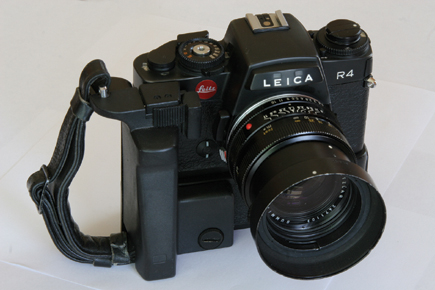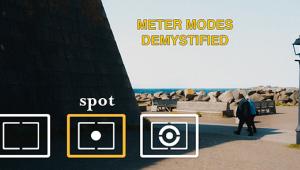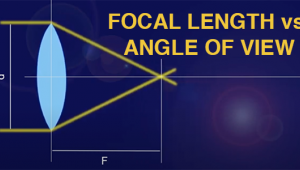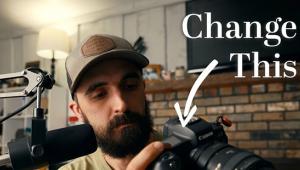Street Smarts; The Savvy Consumer’s Guide To Pre-Owned, Collectible, And Vintage Cameras; Leicaflexes And Early Leica Rs Page 2
 |
|
|
The final Leicaflex, the SL2 ('74-'76) is, according to many collectors,
the best of the breed and (ahem) the finest German-made 35mm SLR ever (though
Contarex fans would beg to disagree). It has (at last) a full area matte focusing
screen with central split-image rangefinder and microprism collar, a battery-powered
viewfinder illumination system, and it's easily recognizable by the large
knurled battery compartment cover on the front, the unaesthetic battery check
button next to the Leicaflex logo, and an "SL2" marking on the front
shoulder of the top cover. Operationally the SL2 is the one to have, but you'll
have to pay dearly for the privilege as it is hard to find in top shape and
is avidly collected by Leicaphiles. Both the SL and the SL2 were sold in MOT
versions that accommodated the same huge but excellent 3 fps Leica motor.
Another problem with the SL2 was economic--it reportedly cost Leitz more
to produce it than it sold for. The inevitable result was the Leica R3 ('76-'80),
the result of collaboration between Leitz and Minolta. The R3 was based on a
Minolta XE-1 chassis, and after an initial production run in Wetzlar, most were
built in the Leitz Portugal factory and marked accordingly. A robust, hefty
all-metal camera, it has an excellent high-magnification finder with split-image
rangefinder and microprism collar, an electronically-controlled Copal-Leitz
vertical metal-blade focal plane shutter with speeds from 4 seconds to 1/1000
sec plus B, selective or center-weighted meter patterns, and Aperture-Priority
plus Manual Exposure modes. There was also an R3 MOT designed to accept the
MOT motor drive. The Leica R3 may lack the distinctive look and "Made
in Germany" panache of the Leicaflexes, but it's a worthy successor,
and by far the least expensive, most reliable way to get into the Leica R system.
Black and chrome models are the most affordable; safari (camo) green, gold,
and commemorative models will set you back a pretty penny.
The final Leica R model we'll reference as an "early R" is
the Leica R4 ('80-'86), a lighter, more compact model based on the
Minolta XE-7 chassis and XD-11 electronics. It is a rugged, durable, thoroughly
modern machine with five Exposure modes
(Aperture-Priority Spot, Aperture-Priority Integral, Shutter-Priority, Program,
and Manual), full-information finder, depth of field preview, and interchangeable
viewing screens. It was also offered in a simplified version (the R4s of '83)
with Manual and Aperture-Priority modes, and a US-only version, the R4s Model
2 (P), with a slightly different wind lever and rewind crank. Only about 6000
Model 2 (P)s were made so it has collector potential. The R4 was also the first
Leica R that allowed mounting a winder or motor as standard.
 |
|
|
Making an SLR connection to the Leica legend--and with the present Leica R system, including the current production Leica R9 and recently discontinued R8--is obviously part of the appeal of shooting with a Leicaflex or Leica R. The ability to use Leica R lenses, an array that includes some of the finest SLR optics ever made, also has a lot to do with it. That's why these cameras--and their lenses--hold their value remarkably well even in the digital age. To give you an idea of recent prices, here are some quoted to me by Adorama in New York--note that E condition means excellent and functional but showing some cosmetic imperfections and/or signs of use: Leicaflex standard body in E+ condition $420, in E condition $320; Leicaflex SL body in E condition $420; Leica R3 MOT in E condition $259; Leica R4 in E condition $289; two-cam 50mm f/2 Summicron-R lens in E condition $240; three-cam 50mm f/2 Summicron-R lens in E condition $269.
- Log in or register to post comments

































